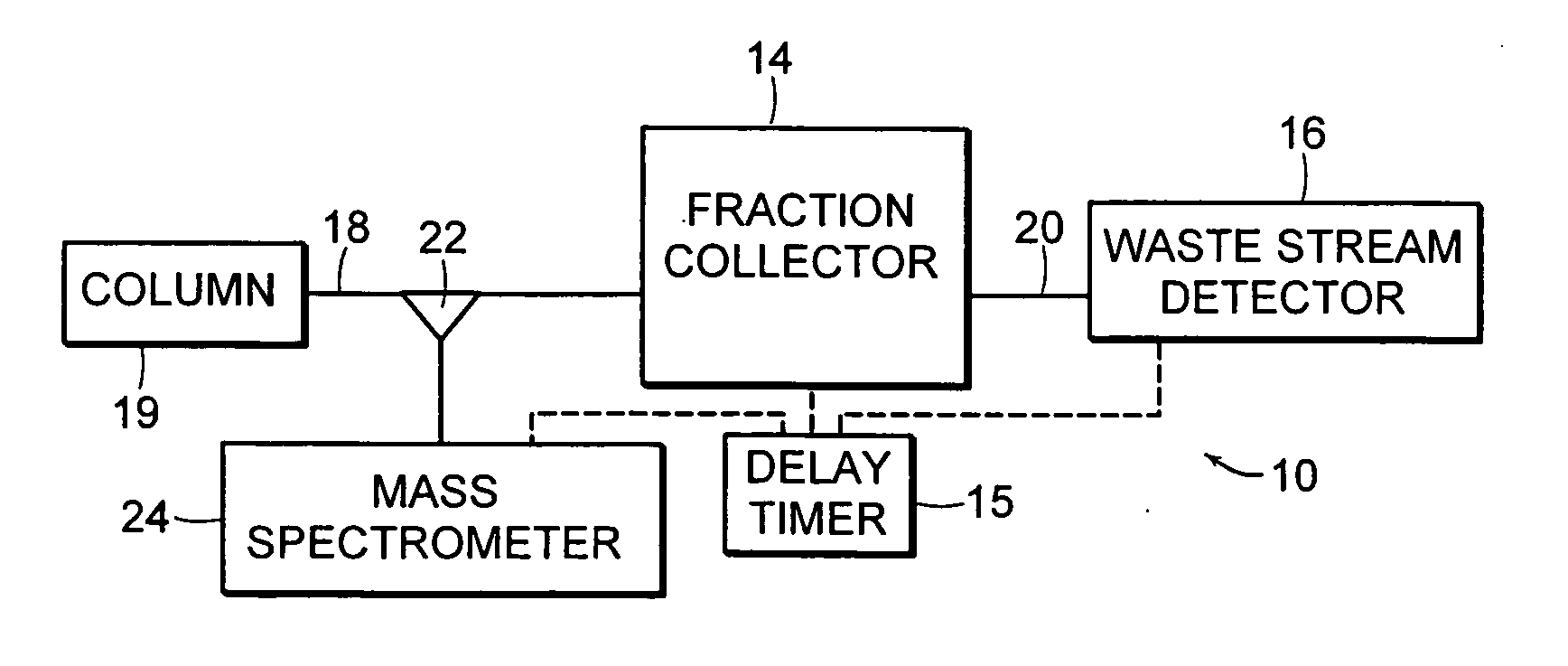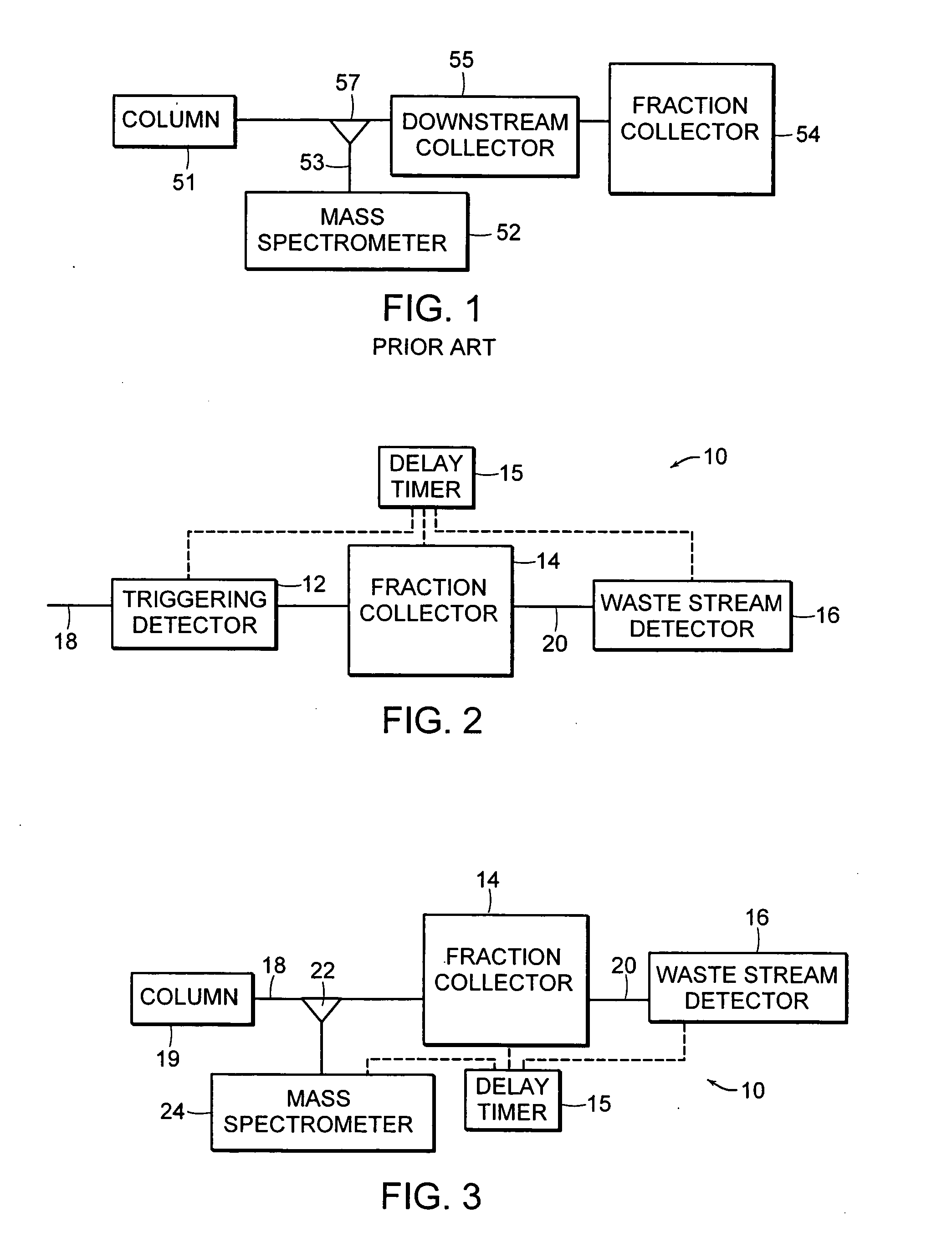Fraction collector for composition analysis
a fraction collector and composition technology, applied in the field of fluid systems, can solve the problems of changing delay time, special calibrant dyes must be injected, and the timing of triggering detectors is not necessarily installed directly upstream, so as to eliminate the timing error of fraction collectors
- Summary
- Abstract
- Description
- Claims
- Application Information
AI Technical Summary
Benefits of technology
Problems solved by technology
Method used
Image
Examples
Embodiment Construction
[0041] The present invention will be described in detail with respect to chromatographic applications with the understanding that embodiments of the present invention are directed to industrial and process control applications as well.
[0042] Referring to FIG. 2, a system flow path 10 according to an illustrative embodiment of the invention is shown diagrammatically. The system flow path 10 includes a triggering detector 12, a fraction collector 14 and a waste stream detector 16 arranged in series. A delay timer 15 is configured to introduce timed signals for actuating (opening and closing) the fraction collector 14. An eluent stream 18 from a liquid chromatography column (LC Column) (not shown) flows through the triggering detector 12 and continues on to the fraction collector 14. The fraction collector 14 is triggered by the delay timer 15 at an appropriate time to divert and collect or identify a particular component of the eluent stream 18. The portions of the eluent stream 18 t...
PUM
| Property | Measurement | Unit |
|---|---|---|
| time | aaaaa | aaaaa |
| wavelength | aaaaa | aaaaa |
| time delay | aaaaa | aaaaa |
Abstract
Description
Claims
Application Information
 Login to View More
Login to View More - R&D
- Intellectual Property
- Life Sciences
- Materials
- Tech Scout
- Unparalleled Data Quality
- Higher Quality Content
- 60% Fewer Hallucinations
Browse by: Latest US Patents, China's latest patents, Technical Efficacy Thesaurus, Application Domain, Technology Topic, Popular Technical Reports.
© 2025 PatSnap. All rights reserved.Legal|Privacy policy|Modern Slavery Act Transparency Statement|Sitemap|About US| Contact US: help@patsnap.com



